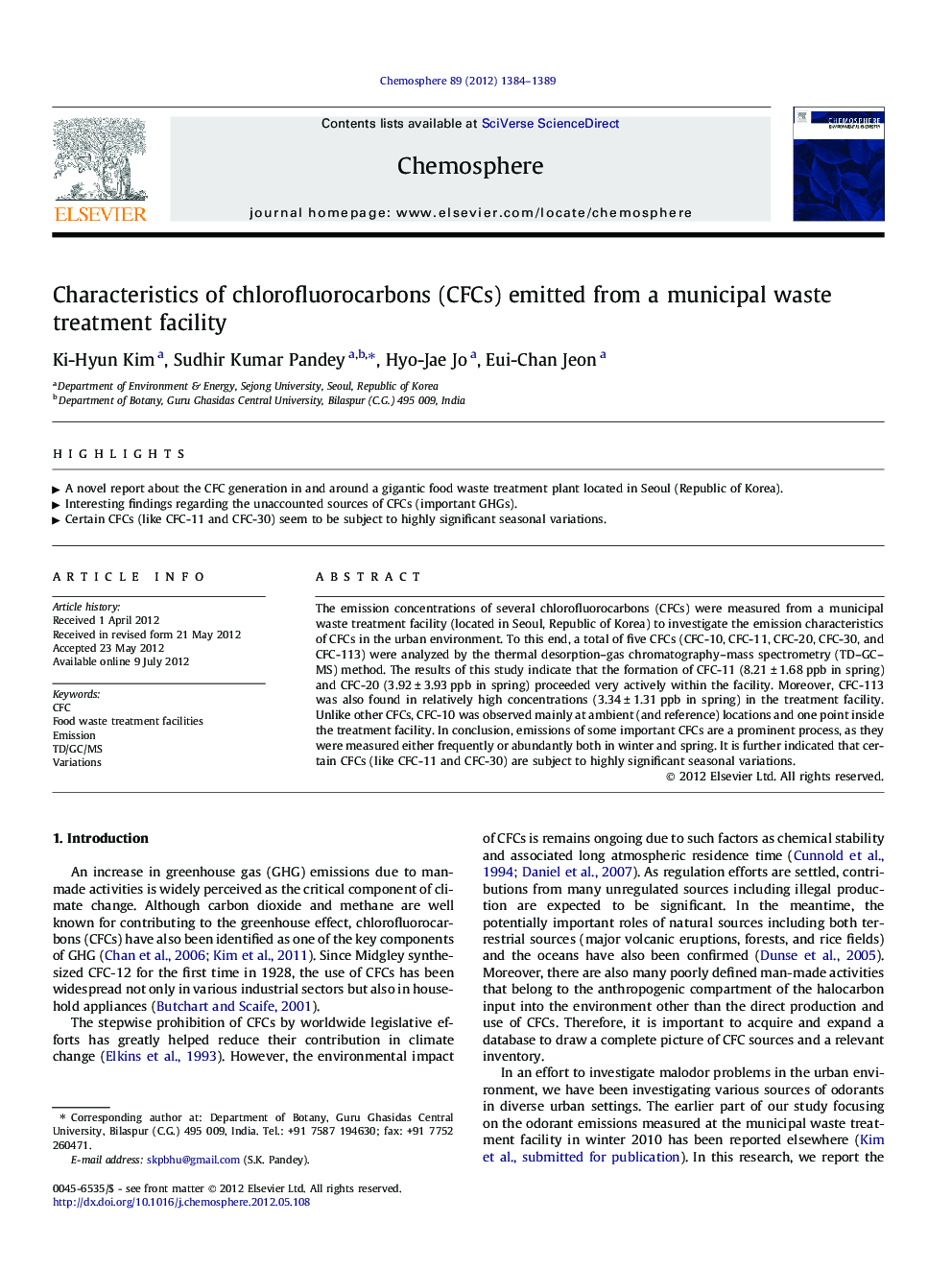| Article ID | Journal | Published Year | Pages | File Type |
|---|---|---|---|---|
| 4409655 | Chemosphere | 2012 | 6 Pages |
The emission concentrations of several chlorofluorocarbons (CFCs) were measured from a municipal waste treatment facility (located in Seoul, Republic of Korea) to investigate the emission characteristics of CFCs in the urban environment. To this end, a total of five CFCs (CFC-10, CFC-11, CFC-20, CFC-30, and CFC-113) were analyzed by the thermal desorption–gas chromatography–mass spectrometry (TD–GC–MS) method. The results of this study indicate that the formation of CFC-11 (8.21 ± 1.68 ppb in spring) and CFC-20 (3.92 ± 3.93 ppb in spring) proceeded very actively within the facility. Moreover, CFC-113 was also found in relatively high concentrations (3.34 ± 1.31 ppb in spring) in the treatment facility. Unlike other CFCs, CFC-10 was observed mainly at ambient (and reference) locations and one point inside the treatment facility. In conclusion, emissions of some important CFCs are a prominent process, as they were measured either frequently or abundantly both in winter and spring. It is further indicated that certain CFCs (like CFC-11 and CFC-30) are subject to highly significant seasonal variations.
► A novel report about the CFC generation in and around a gigantic food waste treatment plant located in Seoul (Republic of Korea). ► Interesting findings regarding the unaccounted sources of CFCs (important GHGs). ► Certain CFCs (like CFC-11 and CFC-30) seem to be subject to highly significant seasonal variations.
